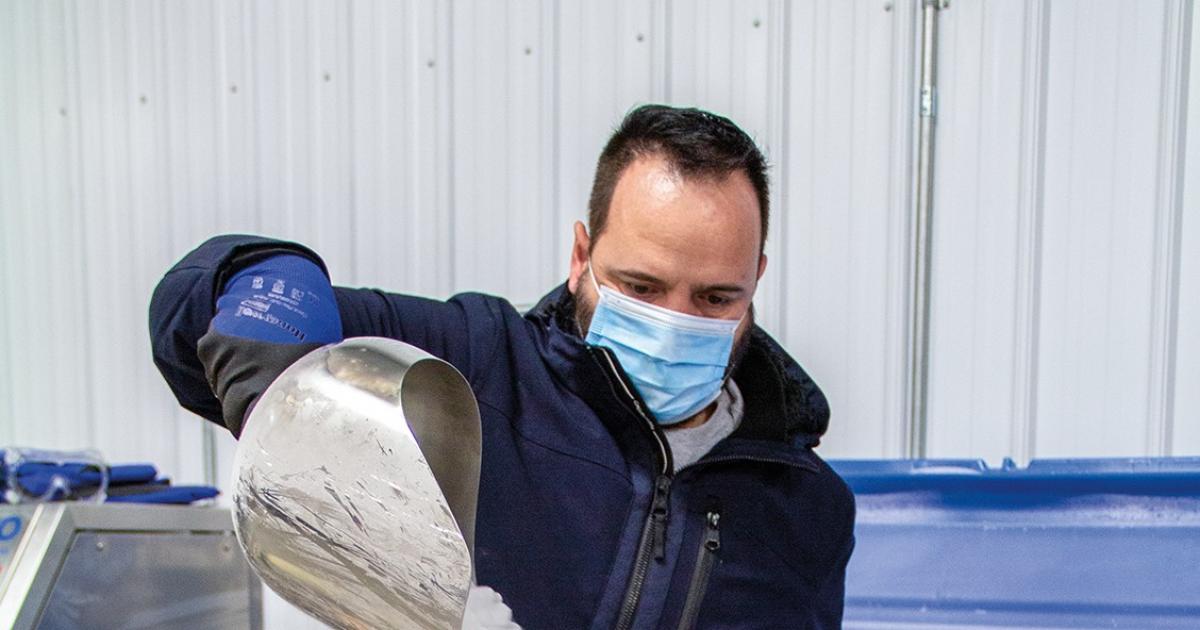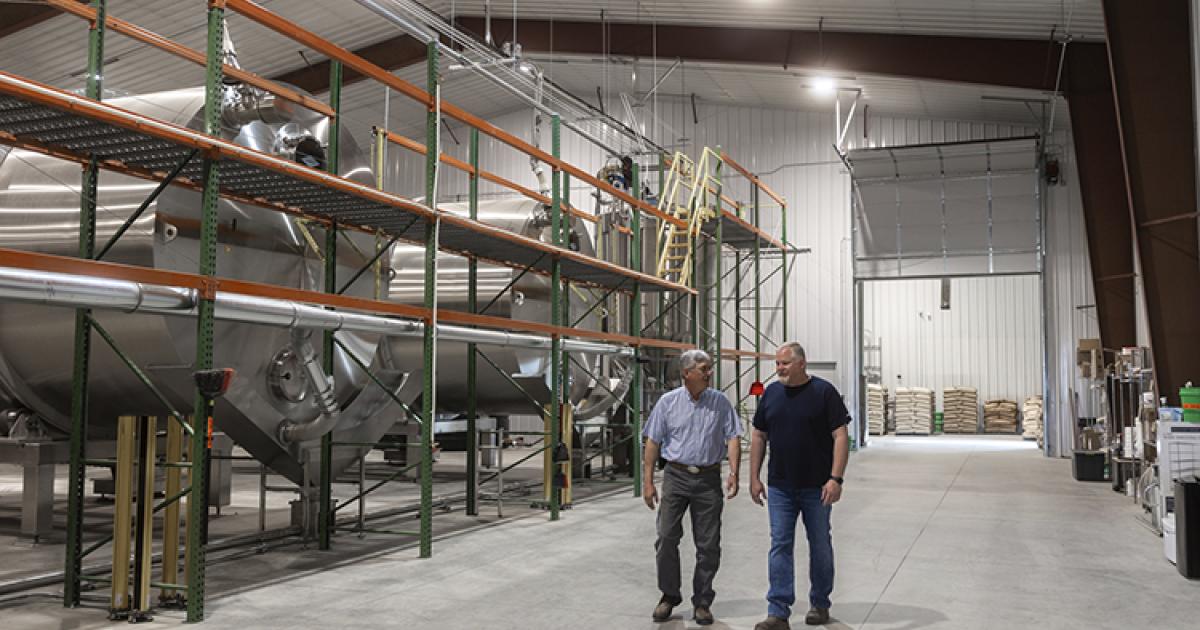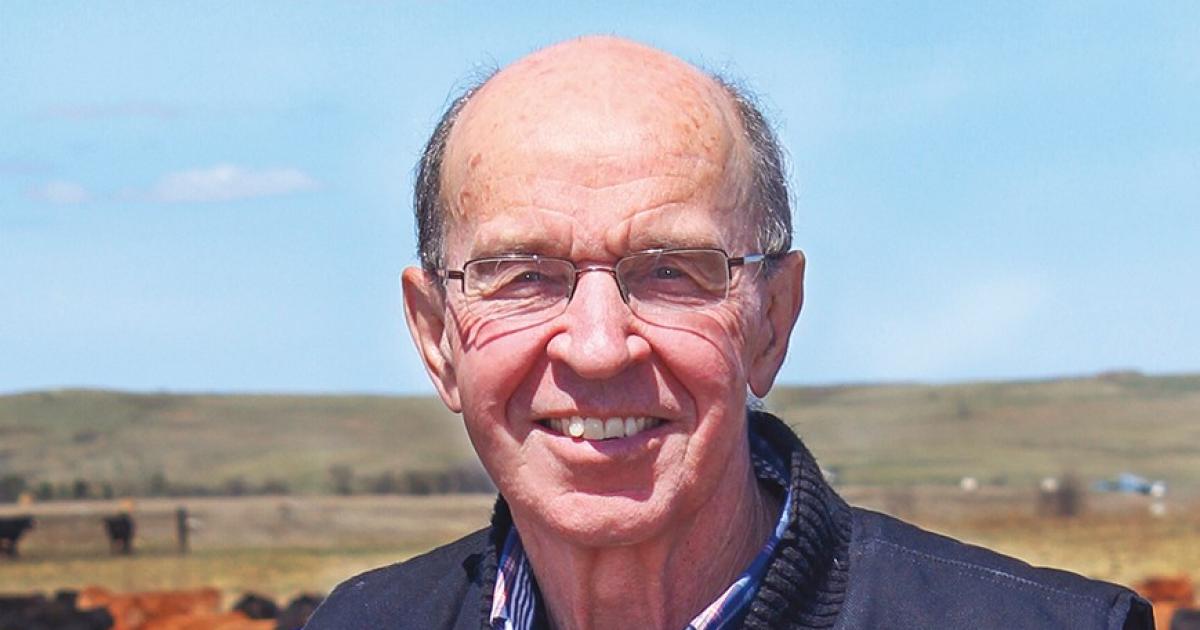One of North Dakota’s electric cooperatives has joined the fight against COVID-19. Basin Electric Power Cooperative’s Dakota Gasification Company (DGC) is partnering with American Welding & Gas (AWG) to provide the N.D. Department of Health (NDDoH) with an important resource that could help save lives.
“A couple years ago, we built our urea fertilizer facility. In the process of producing urea fertilizer – which is primarily used as a nitrogen source for farmers – we created excess liquefied CO2 (carbon dioxide),” says Zach Jacobson, DGC account manager. “We decided that we were going to sell that excess into the market. So, we looked at the prospect of providing food and beverage grade CO2 to North Dakota and the surrounding areas. AWG was a partner that we reached out to early.”
On June 30, 2020, DGC delivered its first liquid CO2 to AWG, which was sold to water treatment plants across the state.
A N.D. Department of Health employee pours dry ice into a shipper, which is used to transport COVID-19 vaccines. Photo courtesy N.D. Department of Health
“The majority of CO2 is used for water treatment or the restaurant and beverage industry. All of the fountain pop machines that you see at restaurants, gas stations, bars – they all use CO2 to give it the fizz. Water treatment plants use CO2 to help control the pH of the water,” says Chet Karsnia, AWG’s vice president of sales.
But, as COVID-19 ravaged the world, a new need emerged.
“As this emergency began growing, it became evident there was going to be development of a variety of vaccines, and some were going to require ultra-cold storage,” says Tim Wiedrich, NDDoH health resources and response section chief. “So, in April 2020, we acquired the capability to produce dry ice, so that we could be prepared when the vaccine became available, and we could handle the distribution.”
LARGE-SCALE DISTRIBUTION
When the Pfizer-BioNTech COVID-19 vaccine – the first vaccine of its kind – became available, undiluted vials needed to be continuously stored at an extremely low temperature – between 76 to 112 degrees below zero. That’s colder than the coldest North Dakota day on record. To create the dry ice needed for large-scale distribution and storage of the vaccines, NDDoH needed liquid CO2. That’s when the department reached out to AWG.
“Where the dry ice comes into effect is if we are doing a large-scale distribution,” Wiedrich says. “In order to maintain the temperature in non-powered containers, we use shippers, which are basically a configuration of cardboard boxes and insulated boxes that fit within each other. We pack them out in certain configurations, depending on the temperature range that we want to maintain for the product that we’re shipping. Dry ice can be used to attain normal freezer temperatures in addition to ultra-cold temperatures. It all depends on how we pack it out.”
That cold storage capacity makes it possible for NDDoH to deliver larger quantities of the vaccine to more destinations. If the department relied on powered refrigeration units, its distribution capability would be significantly less.
“That’s why the production of this dry ice is really an important component of our approach,” Wiedrich says. “If we begin receiving large quantities and need to do extremely large shipments, we can do that simultaneously because of the dry ice. In other words, in this emergency, the product won't linger in our warehouse, waiting for the appropriate equipment to be able to move it out. We have literally hundreds of these shippers that we can move simultaneously using dry ice.”
PUBLIC-PRIVATE PARTNERSHIP
In February, the U.S. Food and Drug Administration announced that undiluted frozen vials of the Pfizer-BioNTech COVID-19 vaccine could be transported and stored at conventional temperatures commonly found in pharmaceutical freezers for a period of up to two weeks. This allows the vials to be transported and stored under more flexible conditions. While it reduces the need for ultra-cold storage, Weidrich says NDDoH’s partnership with AWG and DGC is still valuable.
“The dry ice is useful for more than just the ultra-cold. It’s also useful for us doing the other types of refrigeration and freezing that are not in that ultra-cold range. This positions us for whatever the next emergencies are, to be in a strong position to distribute vaccines to the citizens of this state,” Weidrich says. “Our vaccination program is going very well in North Dakota, and it's because of this large team effort that basically folds together the resources of the private sector with the governmental response. In this case, we have a gas that is being produced within North Dakota. We don’t need to go outside of the state to obtain access to it. And, getting vaccines packaged and distributed is a very important activity that truly can be – and is – lifesaving.”
Jacobson says Basin Electric Power Cooperative is proud to be a part of that effort.
“Anything that we could do to help slow or stop the spread of the coronavirus was a top priority for us,” he says. “Even though it wasn’t an extremely profitable venture, it’s certainly worth it to get things back to normal as soon as possible. So, it was really important for us to reach out and do what we can to help.”
As of March 22, more than 204,000 North Dakotans – 35 percent of the state’s population – had received at least one dose of a COVID-19 vaccine.
Krista Rausch is communications specialist for the North Dakota Association of Rural Electric Cooperatives and Capital Electric Cooperative. She can be reached at krausch@ndarec.com.











